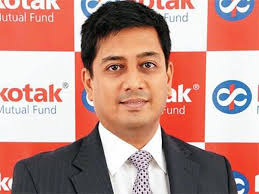 Going ahead, do you think the markets have the potential to deliver the kind of performance which we saw in 2014? What are the key risks to market currently?
Going ahead, do you think the markets have the potential to deliver the kind of performance which we saw in 2014? What are the key risks to market currently?
In 2014, the Indian equities were just coming out of a multi-year downturn. The valuations were very attractive to start with. This resulted in outsized returns when the macro fundamentals and sentiments changed positively. In contrast, today, the market is trading at fair valuation levels.
Therefore, the market returns are likely to be more moderate over the next year. The returns are likely to be in line with the earnings growth trajectory going forward. Over the next 3-5 years, however, we believe there can be a re-rating of Indian equity valuations if the expected economic recovery gains strength and investor participation increases.
Any significant uptick in commodity prices would adversely impact Indian macro-environment and economy. The trend of currency depreciation across most markets is another worry. Any delay in expected recovery in corporate earnings will also be viewed negatively by the market.
What is your reading about the current state of the Indian economy? What global cues are you looking out for?
In our view, Indian economy is on the mend. While there has been significant improvement on the macro side over the last year or so, the corporate and business fundamentals do not inspire the same level of confidence yet. With interest rates easing, we may see some gradual pick up in consumption levels, which could lead to better utilization of existing capacities and eventually for further investment plans. The renewed focus on building infrastructure by the government will also start yielding results in the coming years.
Post global financial crisis, for the last several years we have seen different forms of quantitative easing by central bankers across the globe to revive and stabilize growth. Now that the central bankers are trying to withdraw stimulus, we need to assess the likely impact of the same on economies and markets. The steps that will be taken by US Fed will be closely watched in this context.
Mutual funds are receiving inflows when markets fall. Is this a sign of maturity among investors?
True. For the last 18 months or so, equity mutual funds have been witnessing consistent inflows. This has not changed even with market showing higher volatility in the last couple of months on the back of emerging market currency scare. The equity mutual fund SIP book of the industry has gone up considerably during this period, and now amounts to about Rs. 30,000 crore annually (40-45% of total yearly inflows) – this is a very good sign. Not only the existing investors are investing for longer periods now, but also we have seen healthy increase in new investor folios.
Basic fund management strategies are more or less similar across fund houses. How difficult is to stand out from the crowd, especially when it comes to fund management?
If one has to stand out from crowd, logically he/she has to do something different from the rest and also more importantly needs to make right decisions. However, it is easier said than done. According to me, investment discipline and performance consistency are the critical attributes which can enable long term success in fund management. This needs to be viewed in relation to various market phases. In stock markets, since there is a fair degree of randomness in the short run, whichever assessment one makes may not be entirely truthful.
How do you generate ideas and what is your selection process before an idea gets added to the portfolio?
The investment ideas are generated in-house or through external inputs. Fund management and research teams regularly keep evaluating companies from investment perspective, and most of the ideas are generated at this forum. Sometimes external inputs on stock/ sector could also be starting points for idea evaluation.
Our investment style is predominantly ‘growth at reasonable price’. We follow a blend of top-down and bottom-up approach for portfolio construction in order to derive value from macro trends and security specific opportunities.
We try to look for businesses that have proven business models, which are scalable in nature, where capital efficiency is high and firms which have reasonable competitive edge in their respective areas of business. We also very keenly look at the management track record and its quality. The final filter is valuation in every case. Typically, we look for compounding characteristics of earnings growth at reasonable valuations, and build portfolio around that strategy.
What are your risk mitigation strategies?
Managing risk is as important as identifying investment opportunities. Risk is multi-dimensional. It is not like you can look at one particular number or a set of parameters to manage risk. At the fund house level, we have several risk limits such as limits on sector weights, stock exposure levels, portfolio concentration, cash levels etc. Liquidity in a particular stock is also an additional risk criterion. If we are taking a position which is very illiquid, then we would rather limit it only to a certain manageable portion of the portfolio. Apart from that, frequent review of the portfolio and the assumptions made at the time of investment also help in mitigating risk.
How do you deploy funds in market when you get huge inflows and there are no opportunities in the market?
We generally do not take cash calls in the portfolios. Whenever there is an inflow into the fund, it is clear that the investor wants to invest in equity and hence, he/she has invested in the fund. As portfolio managers, our job is to follow equity mandate rather than try to time the market.
The maximum cash levels in our portfolios are limited to 7.5% of the corpus. Beyond this level, if there are no stock investment opportunities at any point of time, we generally invest the money in index/ benchmark and gradually convert that into stocks that we like, at the opportune time.
Can active fund managers continue to beat benchmarks in future? Will there be challenges in generating alpha and finding the right stocks to beat indices?
The Indian mutual fund industry has created significant alpha in the last two decades. The debate on whether the alpha generation will sustain or not has been going on for a while now.
Going ahead, new emerging business models and improved economy will present enough opportunities to generate alpha for large cap as well mid cap fund managers. We believe that a developing market like India still has many more years to go before saturation from a perspective of active fund management. However, as the time passes, no doubt, the alpha generation is unlikely to be as easy as in the past. Increase in investment research and institutionalization of market will gradually make alpha generation more difficult, but hopefully not impossible.




